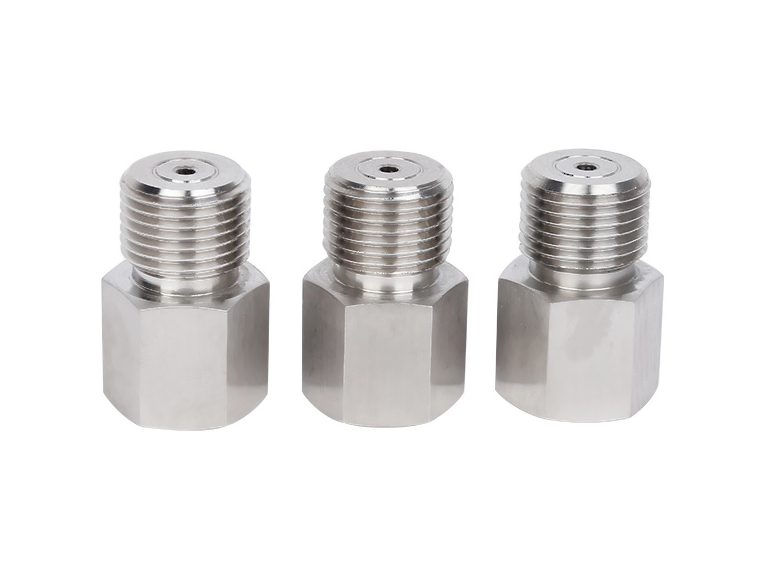High-Precision CNC Turning of Carbon Steel for Oil and Gas Drilling Tools
Extreme Durability in Harsh Downhole Environments
Oil and gas drilling tools operate under extreme conditions, including pressures exceeding 20,000 psi and abrasive geological formations. Carbon steel alloys dominate this sector, constituting 75% of downhole components due to their high strength and cost efficiency. Advanced CNC turning services produce drill collars, valve bodies, and tool joints with ±0.01mm tolerances, critical for pressure integrity.
The shift toward ultra-deepwater drilling (5,000+ meters) demands materials like 4140 alloy steel with nitriding surface treatments to withstand H₂S corrosion and 150°C thermal cycling while maintaining 1,000+ MPa yield strength.
Material Selection: Balancing Strength and Corrosion Resistance
Material | Key Metrics | Drilling Applications | Limitations |
|---|---|---|---|
655 MPa YS, 40 HRC (quenched & tempered) | Drill collars, blowout preventers | Requires coating for sour gas resistance | |
1,170 MPa YS, 45 HRC | High-pressure valve bodies | Susceptible to hydrogen embrittlement | |
585 MPa UTS, 25 HRC | Non-critical tool joints, bushings | Limited to <80°C environments | |
460 MPa YS, 22% elongation | Mud pump components, riser fittings | Needs post-weld heat treatment |
Material Selection Protocol
Sour Service Components
Rationale: 4140 steel is heat-treated to 40 HRC and coated with electroless nickel-phosphorus (50-75μm) to resist H₂S-induced cracking per NACE MR0175.
Validation: ASTM G48 Method C testing confirms <0.1mm/year corrosion rate in 15% H₂S environments.
Ultra-High Pressure Tools
Logic: 4340 steel undergoes vacuum carburizing to achieve 60 HRC surface hardness while maintaining 12% core elongation. Combined with PVD AlCrN coating, it withstands 250 MPa cyclic stresses.
Cost-Sensitive Non-Critical Parts
Strategy: 1045 steel with zinc-nickel plating provides adequate corrosion protection at 40% lower cost than alloy steels.
CNC Machining Process Optimization
Process | Technical Specifications | Applications | Advantages |
|---|---|---|---|
0.005mm roundness, 3,500 RPM spindle | Complex tool joint profiles | Single-setup machining for API-spec threads | |
50xD aspect ratio, 0.02mm straightness | Gun-drilled drill collars | Maintains ±0.03mm concentricity | |
API 7-1 trapezoidal threads, 0.03mm pitch error | Rotary shoulder connections | 5x faster than single-point threading | |
60 HRC hardness, Ra 0.8μm | Case-hardened valve seats | Eliminates post-grinding operations |
Process Workflow for Drill Collars
Rough Turning: Remove 85% stock with ceramic inserts (3mm DOC, 250 m/min speed)
Stress Relieving: 620°C×4h annealing to reduce residual stresses by 90%
Finish Turning: PCBN tools achieve Ra 1.6μm on sealing surfaces
Coating: Apply tungsten carbide HVOF for abrasion resistance
Surface Engineering: Combatting Downhole Corrosion
Treatment | Technical Parameters | Drilling Benefits | Standards |
|---|---|---|---|
0.3mm case depth, 1,100 HV | Wear resistance in abrasive formations | API 6A, ISO 15156-2 | |
75μm thickness, <5% porosity | H₂S/CO₂ corrosion protection | NACE TM0177 | |
5μm thickness, friction coefficient 0.1 | Friction reduction in directional drilling | ASTM F2328 | |
300μm thickness, 1,400 HV | Erosion protection in high-velocity mud flows | AWS C2.23/C2.24 |
Coating Selection Logic
Sour Gas Wells: Electroless Ni-P coating with 100-150μm thickness prevents sulfide stress cracking (SSC) per NACE MR0103.
Horizontal Drilling: DLC-coated tool joints reduce friction torque by 35% compared to uncoated surfaces.
Deepwater Risers: HVOF tungsten carbide extends service life by 3x in saltwater environments with 5% chlorides.
Quality Control: API-Compliant Validation
Stage | Critical Parameters | Methodology | Equipment | Standards |
|---|---|---|---|---|
Material Certification | Composition, Charpy impact @-20°C | OES, impact tester | SPECTROMAXx, Instron 9340 | API 20E |
Dimensional Inspection | Thread lead error, taper angle | 3D optical comparator | Nikon VMR-6555 | API 7-2 |
NDT | Ultrasonic crack detection (≥0.5mm) | Phased array UT | Olympus OmniScan MX2 | ASME V, Art. 4 |
Pressure Testing | 1.5x working pressure, 30min hold | Hydrostatic test bench | Maxpro 600 MPa system | API 16A |
Certifications:
API Q1 compliant manufacturing process
ISO 9001 and NADCAP-accredited NDT
Industry Applications
API Tool Joints: 4140 steel + gas nitriding (150 HRC surface)
Blowout Preventers: 4340 steel + DLC coating (0.08 friction coefficient)
Mud Pump Liners: 1045 steel + HVOF tungsten carbide (1,200 HV)
Conclusion
Precision CNC turning services and advanced surface engineering enables oil and gas tools to withstand 20,000+ psi pressures while reducing maintenance costs by 40%. Explore our API-certified machining solutions for your next drilling project.
FAQ
Why choose 4140 over 4340 steel for H₂S environments?
How does DLC coating improve directional drilling efficiency?
What NACE standards apply to sour gas components?
How to verify API thread tolerances?
Cost comparison: Electroless Ni-P vs thermal spray WC?

